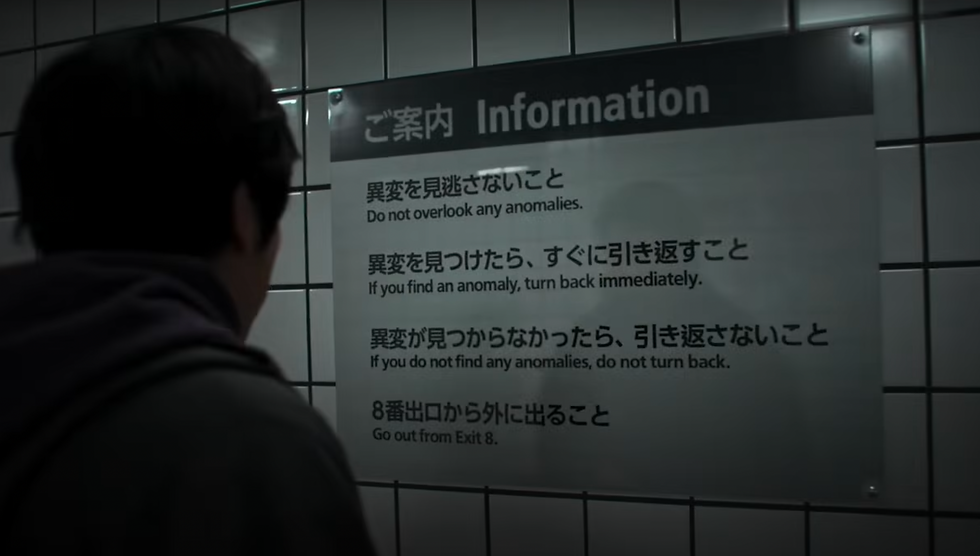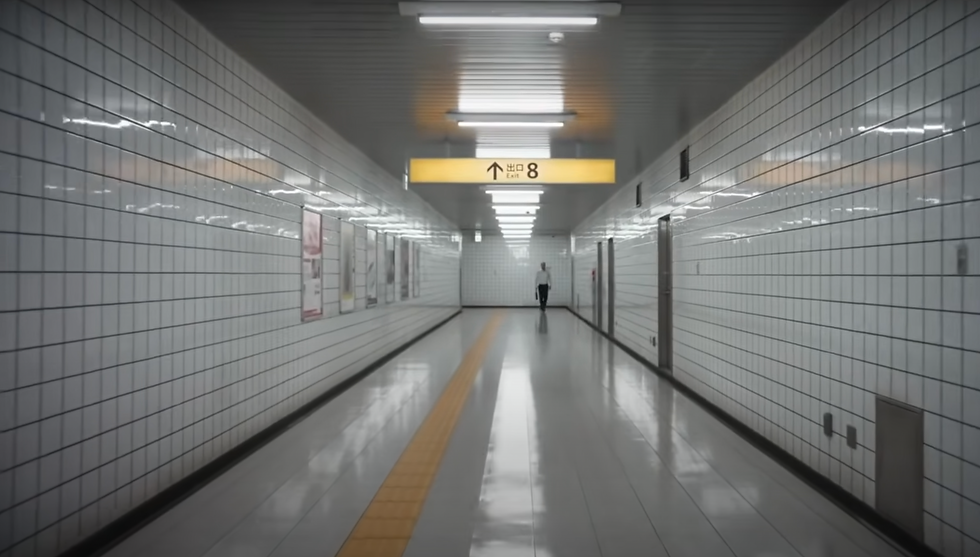- Valentina aka Papaya_Horror
- Jul 13
- 3 min read
Updated: Jul 15
Exit 8
The Best Game-to-Film Horror That Subjects the Male Psyche to Sterile Terror

Men, don’t worry – you get your moment in cinema too.
Male suffering is rarely the focus in horror—at least not without punishment, ridicule, or monstrosity attached. “Exit 8” shifts that. It offers a vision of masculine fear that’s quieter, more existential, and no less devastating.

“Exit 8” is a 2025 Japanese psychological horror film written and directed by Genki Kawamura—known for emotionally resonant dramas like “If Cats Disappeared from the World”—makes a surprising but confident leap into mind-bending terror, based on the 2023 indie video game The Exit 8, developed by Kotake Create.
If you’ve heard of or played the game, you’ll know the premise: A man is trapped in an endless, sterile subway passageway. His goal? Find Exit 8.
The rules are deceptively simple: Don’t overlook anything out of the ordinary. If you spot an anomaly, turn back immediately. If not, keep moving. Only then will you escape through Exit 8.
But one wrong move, one missed clue, and you’re back to the beginning.
The film sticks to this eerie structure and runs a lean 95 minutes, testing your nerves as much as the protagonist’s. You’re not just watching…you’re playing along, scanning each frame for the uncanny, the out-of-place, the abnormal.

The setting—a cold, fluorescent-lit corridor that feels clinically infinite—becomes a character in itself.
This isn’t gore-soaked horror. It’s psychological terror—the kind that seeps into your bones.
Paranoia escalates in a relentless loop, echoing cult classics like “Cube,” “Run Lola Run,” or “Dead End.” The idea of escape seems less like a possibility and more like a fading memory. But…
While it’s clearly a game adaptation, “Exit 8”rises above expectations. It’s easily one of the best video game-to-film translations I’ve seen.
That said, making a bad film out of this concept would’ve almost required a deliberate effort—the source material is already packed with atmosphere. Yet Kawamura doesn’t just adapt—he expands.
In the tradition of films like “Pulse” and “Cure,” “Exit 8” favors mood and psychological disintegration over jump scares or gore.

The film dives deep into the grind of modern Japanese urban life—and by extension, modern life everywhere. Wake up. Get dressed. Commute. Work. Return home. Face societal expectations to settle down, have children, build the dream.
But what if that dream isn’t yours? What if you’re stuck in someone else’s loop?
What makes “Exit 8” especially compelling is how the endless underground corridor seems to represent not just a physical trap, but a psychological one—the inner landscape of a man torn between duty, expectation, and personal truth.
It’s worth noting that the film opens with a cryptic phone call from his girlfriend, the true meaning of which slowly emerges as the story unfolds.
These themes have often been explored through female narratives—which are vital—but rarely are men allowed to be vulnerable protagonists in this kind of psychological horror.
Men, too, are bound by expectations that can quietly unmake them.
As for the filmmaking itself—it’s stellar. The cinematography and production design conjure a surreal, almost dreamlike atmosphere from the most mundane of settings. It’s a haunting visual paradox.
The performances are quietly captivating, with Kazunari Ninomiya delivering a nuanced portrayal that balances desperation with quiet resolve. Yuki Kōchi, in a supporting role, adds an unpredictable energy that keeps you on edge.

In the end, “Exit 8” is a devilishly engrossing piece of existential dread horror. It’s smart, stylish, and unsettling—culminating in a finale that forces both the Lost Man and the viewer to ask:
Why leave? And what are you really escaping from?









Comments